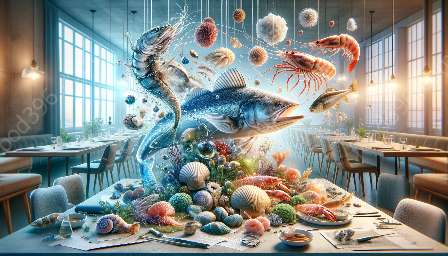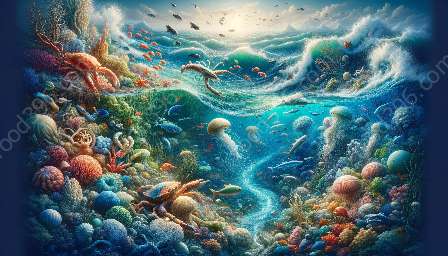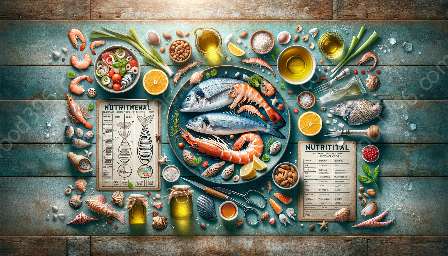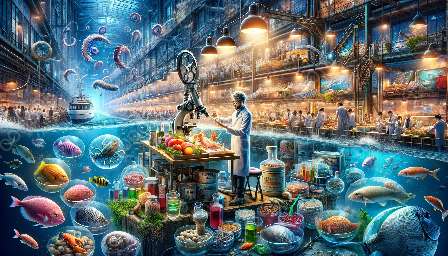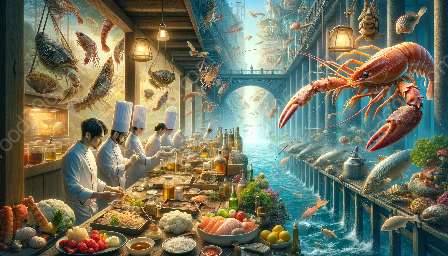Seafood is a culinary delicacy renowned for its versatility, flavors, and sensory appeal. The diverse array of seafood species presents a myriad of flavors, textures, and aroma profiles. The sensory analysis of seafood encompasses the assessment of its taste, aroma, texture, and appearance to understand and appreciate its quality and inherent characteristics.
The Art of Seafood Flavor
The flavors of seafood are as diverse as the ecosystems from which they are harvested. From the delicate sweetness of lobster and crab to the briny richness of oysters and the buttery succulence of salmon, seafood offers an exquisite spectrum of flavors.
One of the defining factors of seafood flavor is its close association with the marine environment. The flavors of seafood are heavily influenced by the marine habitats and diets of the species, resulting in distinct flavor profiles and sensory experiences. For instance, shellfish like clams and mussels often carry a hint of oceanic brininess, while freshwater fish such as trout or catfish may exhibit a milder, cleaner flavor.
Furthermore, the cooking method and preparation techniques play a pivotal role in accentuating the natural flavors of seafood. Whether it is grilled, steamed, fried, or raw, each method can elicit different sensory responses, giving rise to a multitude of flavor experiences.
The Science of Seafood Sensory Analysis
Sensory analysis is a systematic approach to evaluating the sensory attributes of seafood, including taste, aroma, texture, and appearance. The evaluation process involves trained sensory panels or consumers who participate in sensory tests to assess the quality, palatability, and overall sensory experience of different seafood products.
Key parameters in sensory analysis include:
- Taste: This encompasses the basic tastes such as sweetness, saltiness, sourness, and bitterness, as well as more complex flavors specific to different seafood varieties.
- Aroma: The aroma of seafood is a crucial component of its sensory profile. It can be influenced by factors such as the freshness of the seafood, its natural environment, and the presence of volatile compounds.
- Texture: The texture of seafood is evaluated in terms of tenderness, juiciness, firmness, and mouthfeel. It can vary widely among different species and cooking methods.
- Appearance: The visual presentation of seafood is a vital aspect of sensory analysis. Factors such as color, glossiness, and overall aesthetics contribute to the overall sensory appeal of the product.
Advanced techniques such as gas chromatography-mass spectrometry (GC-MS) and electronic nose (e-nose) analysis are also employed to provide objective measurements of seafood aroma and flavor compounds, enhancing the precision of sensory evaluations.
Exploring Seafood Terroir
Similar to the concept of terroir in wine, the notion of 'merroir' is increasingly recognized in the world of seafood, highlighting the influence of specific marine environments on the flavor and sensory attributes of seafood. For example, oysters from distinct coastal regions may exhibit unique flavor profiles associated with the local aquatic conditions, salinity levels, and nutrient compositions.
Moreover, sustainable aquaculture practices and responsible fishing techniques can further enhance the quality and purity of seafood flavors. By minimizing environmental impacts and ensuring the natural integrity of marine ecosystems, these practices contribute to the preservation of authentic seafood flavors and sensory experiences.
The Future of Seafood Flavor and Sensory Analysis
As the appreciation for seafood continues to evolve, so does the science of sensory analysis. Innovations in food technology, such as 3D food printing and molecular gastronomy, offer intriguing possibilities for exploring and manipulating seafood flavors in unprecedented ways.
Furthermore, the integration of data analytics and artificial intelligence in sensory evaluations is poised to revolutionize the understanding of seafood flavor, enabling the identification of flavor trends, consumer preferences, and market insights.
On the culinary front, chefs and food enthusiasts are pushing the boundaries of seafood flavor combinations and pairings, experimenting with novel ingredients, and culinary techniques to deliver immersive and memorable seafood dining experiences.
Conclusion
The world of seafood flavor and sensory analysis is a captivating journey into the depths of marine terroir and culinary artistry. Through the exploration of diverse flavors, the application of sensory science, and the preservation of authentic seafood terroir, the allure of seafood continues to inspire and delight connoisseurs and gastronomes alike.
